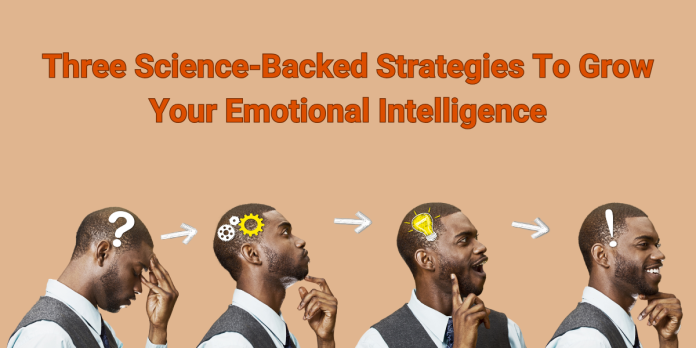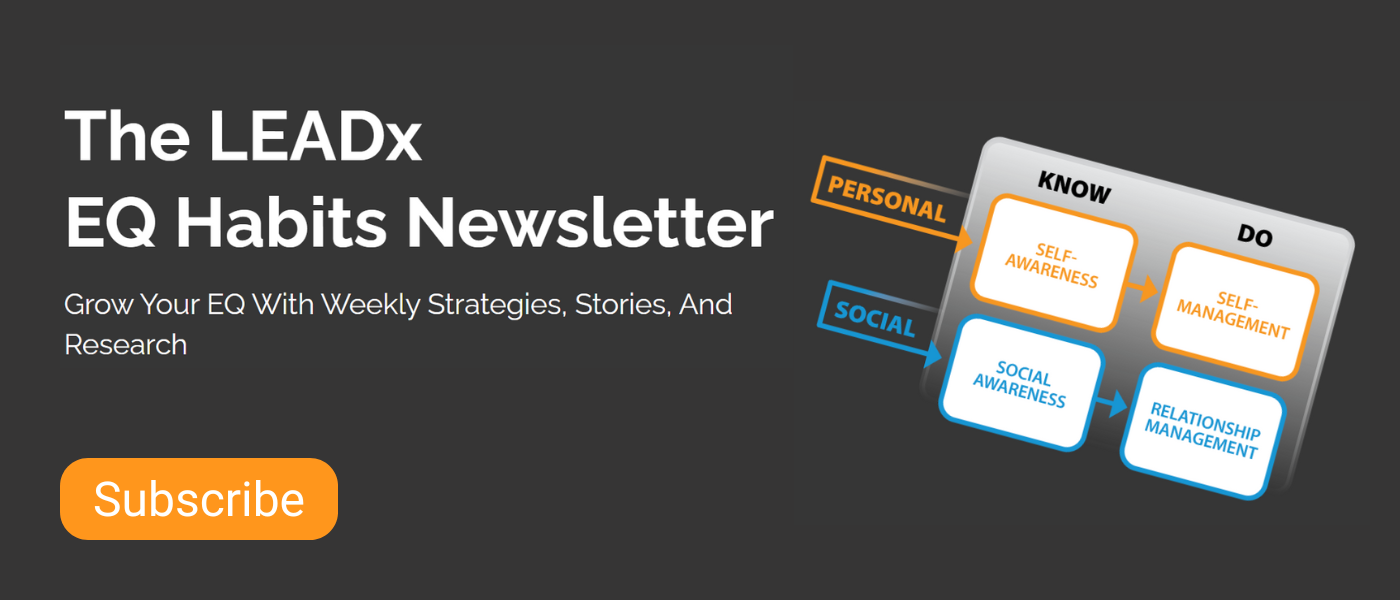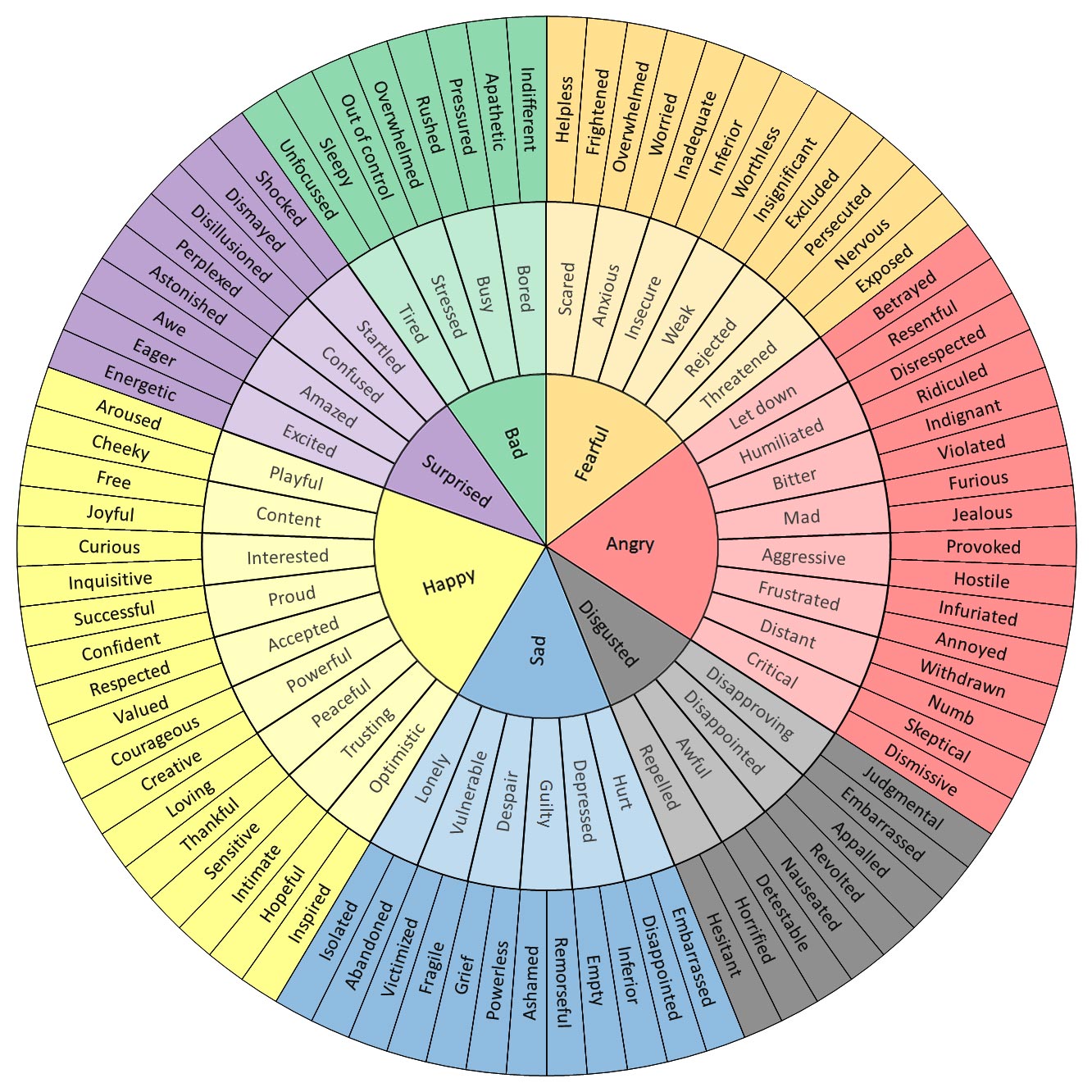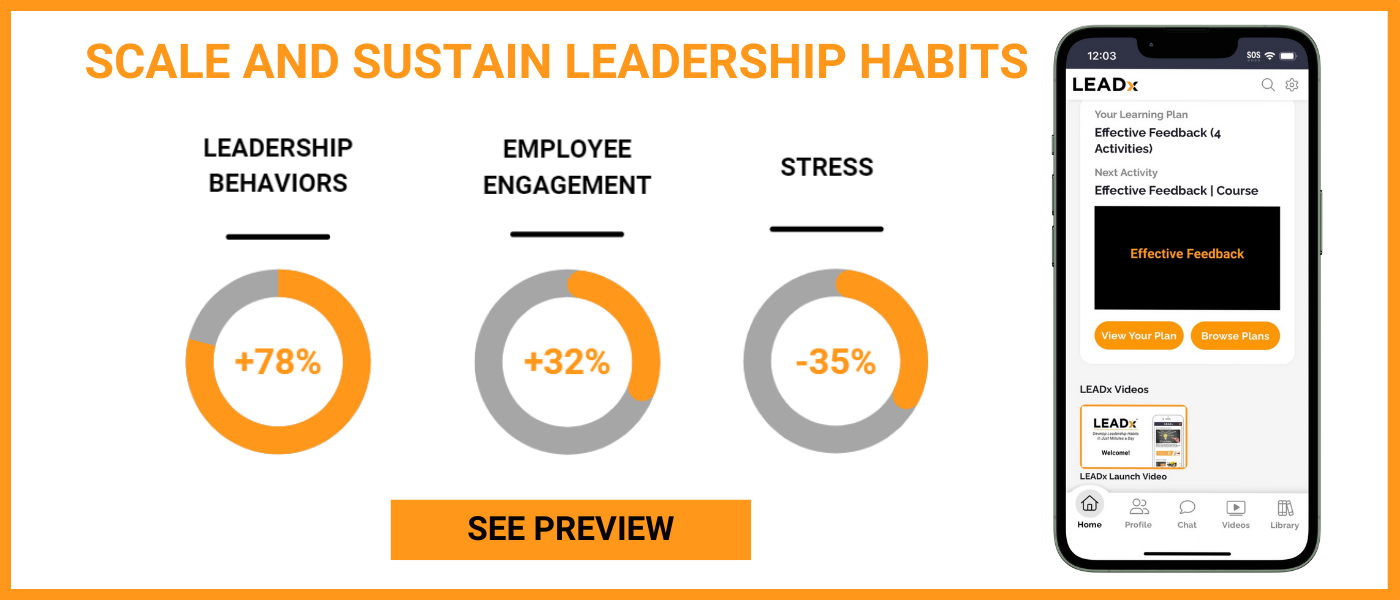
Emotional intelligence (EQ) has an ever-growing body of research showing that it’s one of the most important skills in the workplace. EQ training has been connected to increased employee engagement, improved sales, improved customer satisfaction, and even to earning a higher salary.
 But when you set out to practice and improve your EQ, much of the advice is a bit obvious and boring: “Clean up your sleep hygiene,” “Limit your caffeine intake,” and “Take deep breaths when you’re feeling angry.” I don’t mean to diminish these strategies. They’re certainly important. But, for those looking for strategies that are deeper, more specific to the science of emotions, and more interesting, this article is for you. What follows are three research-backed strategies I came across while writing my latest EQ book.
But when you set out to practice and improve your EQ, much of the advice is a bit obvious and boring: “Clean up your sleep hygiene,” “Limit your caffeine intake,” and “Take deep breaths when you’re feeling angry.” I don’t mean to diminish these strategies. They’re certainly important. But, for those looking for strategies that are deeper, more specific to the science of emotions, and more interesting, this article is for you. What follows are three research-backed strategies I came across while writing my latest EQ book.
3 Strategies To Grow Your Emotional Intelligence
This surprising statistic comes from EQ expert Marc Brackett on a recent podcast, and it reveals a lot about our ability to recognize and understand our own emotions.
When it comes to emotions, we struggle to get specific. And specificity matters, a lot. The main difference between anger and disappointment, for example, is a sense of justice. You get angry if you feel that a bad outcome is unjust. You get disappointed if you feel a bad outcome was just. For example, if you apply for a job and you really want it, you’d be angry if you felt you deserved it but got looked over because they hired their friend. However, you’d be disappointed if you felt you weren’t up to par with other candidates. If you don’t get to this level of nuance with your emotions, you don’t really understand them.
It’s a common trap to immediately try to “manage” your emotion. But how well can you manage your emotion if you haven't determined whether you feel angry, disappointed, or something else entirely? You’ll get further faster by pinpointing exactly what you’re feeling and why. From there, managing your reaction gets much easier. Nuance is control.
EQ Strategy: Practice labeling your emotions with more and more specificity (see the image of the wheel below).
Bonus EQ Strategy: Write out how you feel in a sentence, then ask Chat GPT if there’s a word to describe that sentence.

Our brains are so story-driven that we build stories where they don’t exist. In one study, a group of 34 people viewed a boring film. Two triangles and a circle moved across the screen. A rectangle remained in place. When asked what they saw, 33 of 34 people spun emotion-centered stories about the shapes.
- The circle was “worried.”
- The “little triangle” was an “innocent young thing” (creepy).
- The big triangle was “blinded by rage and frustration.”
This tells us a few important things about how our brains work. First, we should try to catch ourselves creating untrue stories about the people around us. It's all too easy to take a couple behaviors and spin up a story about someone. Better to wait and gather more info. Second, we should intentionally use stories to remember facts, ideas, and new information. Connect what you read and learn to stories to improve your retention. And lastly, we should share stories to communicate an idea, dataset, or concept.
EQ Strategy: Next time you find yourself feeling something negative, pause and ask yourself, “What story am I telling myself right now?” Write that down. Do this at least once per day for a week and look for any patterns.
Bonus EQ Strategy: Next time you’re tasked with sharing an idea, link it to a story. Use the “Status Quo,” “Conflict,” and “Resolution” framework to tell an engaging story.
One study found that simply by describing a day when you were curious, you can boost your mental and physical energy 20% more than when you recount a moment of profound happiness. Another study found that students who are curious improve their test scores by 12 points more than those who aren’t. And a third study shows that channeling curiosity can make you less defensive in moments of stress.
The studies here, which all come from a brilliant HBR article entitled “The Five Dimensions of Curiosity,” are as simple and impactful as they sound. Learn to embrace a mindset of curiosity, and you’ll experience a boost in both energy and performance.
EQ Strategy: Practice this simple reframe. Next time you catch yourself feeling stressed, reframe your stress as something that’s interesting. Say, “It’s interesting how ___.” As author Elizabeth Gilbert writes, “A catastrophe is nothing but a puzzle with the volume of drama turned up very high.”
Putting These Three Strategies To Practice
Often, the best way to learn and improve is simply to follow what catches your interest. So choose whichever of these strategies catches your eye, and give it a try.






